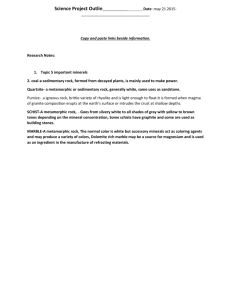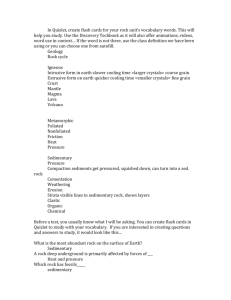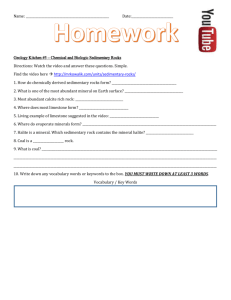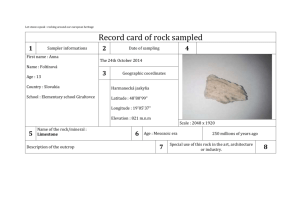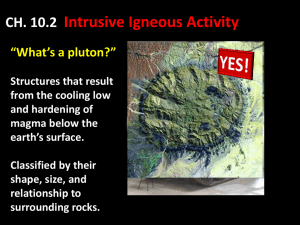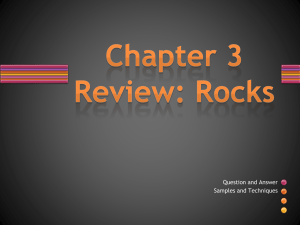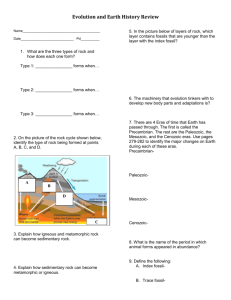Chemical sedimentary rocks
advertisement
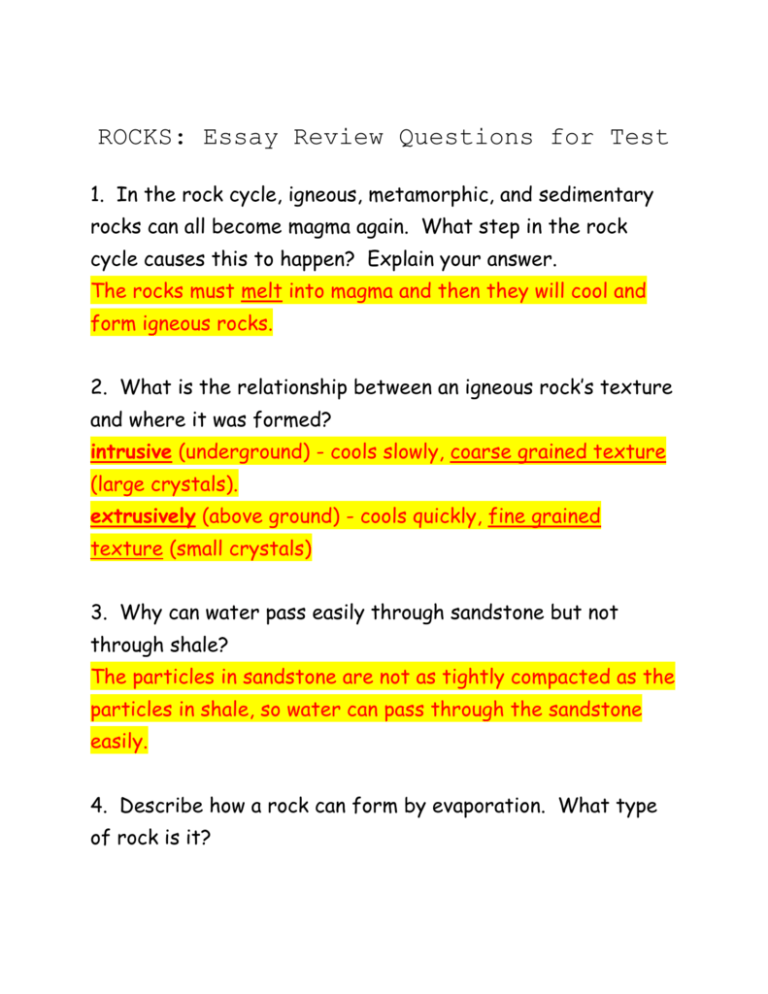
ROCKS: Essay Review Questions for Test 1. In the rock cycle, igneous, metamorphic, and sedimentary rocks can all become magma again. What step in the rock cycle causes this to happen? Explain your answer. The rocks must melt into magma and then they will cool and form igneous rocks. 2. What is the relationship between an igneous rock’s texture and where it was formed? intrusive (underground) - cools slowly, coarse grained texture (large crystals). extrusively (above ground) - cools quickly, fine grained texture (small crystals) 3. Why can water pass easily through sandstone but not through shale? The particles in sandstone are not as tightly compacted as the particles in shale, so water can pass through the sandstone easily. 4. Describe how a rock can form by evaporation. What type of rock is it? Chemical sedimentary rocks form when minerals are dissolved in a solution and the solution evaporates. It will leave behind crystals. (Ex: mineral deposits left behind when seas and lakes evaporate) 5. How do the properties of a rock change when the rock changes to metamorphic? Everything about the rock will change - appearance, texture, crystal structure, and mineral content because of the tremendous heat and pressure. 6. What are the sources of heat that helps metamorphic rocks form? Tectonic plate movement can cause rock to be pushed down into the heat of the mantle. 7. Use the information below about igneous rocks A-D to classify each one as intrusive or extrusive and basaltic or granitic. Fill in the chart with A, B, C, or D. Rock A – dark-colored, large grains Rock B – large crystals, high percentage of silica Rock C – fine-grained texture, light–colored Rock D – from Hawaiian volcano area, no visible crystals Basaltic Granitic Extrusive 7. D 9. C Intrusive 8. A 10. B Basaltic – dark, little silica Granitic – light, high silica 11. Describe the differences among detrital, chemical, and organic rocks. Detrital –bits and pieces of other rocks. Chemical – minerals dissolve in a solution and crystallize Organic – remains of plants and animals 12. What characteristics do geologists use to identify rocks? Color, texture and determine its mineral composition. 13. Which would have large crystal, and igneous rock formed form magma that cooled deep below the surface or an igneous rock that cooled from lava on the surface? Explain why. deep below the surface would have large crystals because the magma cools slowly underground, so crystals grow very large Use the diagram below to answer questions 14-16. 14. The letters in the boxes stand for the three major groups of rocks. Identify those groups. A – Igneous Rock B – Sedimentary Rock C – Metamorphic Rock 15. Describe how rock group C could change into rock group B. A metamorphic rock could change into a sedimentary rock by being weathered and eroded, then deposited in a new location, then over time compaction and cementation forms a sedimentary rock. 16. What forces drive this cycle? Earth’s constructive and destructive forces drive the rock cycle. These forces include: erosion, heat and pressure, melting, and volcanic activity. 17. Name each diagram with the rock group it represents. Metamorphic Igneous Sedimentary
